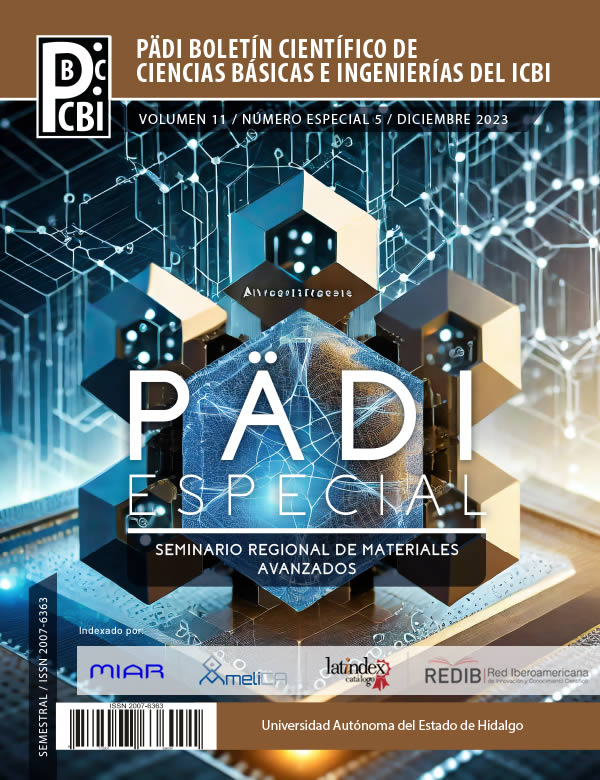Encapsulación de ficocianina en una matriz polimérica de quitosano-TPP por gelación ionotrópica
Abstract
Phycocyanin is a protein present in Spirulina, it has different biological activities such as antioxidant, anti-inflammatory, antitumor and immunomodulatory capacity that make it a biocompound with potential to treat diseases, however, it presents stability and availability problems when administered in biological systems. In this project, it was proposed to encapsulate phycocyanin in a chitosan polymer matrix to protect it from pH, temperature and physiological conditions that compromise its biological activity. The ionotropic gelation technique and tripolyphosphate (TPP) were used as a cross-linking agent. Different ratios of chitosan and TPP, as well as protein, were tested. The best results were obtained with the 9:1 ratio and 10% protein concentration, obtaining 12.6 and 33.21% charge and association efficiency respectively. Through FTIR spectroscopy, the interaction between the amino groups of chitosan and phosphate could be verified. of the TPP, the particle solution presented a surface charge of -37.3 mV and a polydispersity percentage of 84.4.
Downloads
References
Ashaolu, T. J., Samborska, K., Lee, C. C., Tomas, M., Capanoglu, E., Tarhan, Ö., & Jafari, S. M. (2021). Phycocyanin, a super functional ingredient from algae; properties, purification characterization, and applications. International Journal of Biological Macromolecules, 193, 2320-2331.
Bortolini, D. G., Maciel, G. M., Fernandes, I. D. A. A., Pedro, A. C., Rubio, F. T. V., Brancod, I. G., & Haminiuk, C. W. I. (2022). Functional properties of bioactive compounds from Spirulina spp.: Current status and future trends. Food Chemistry: Molecular Sciences, 100134.
Chaiklahan, R., Chirasuwan, N., & Bunnag, B. (2012). Stability of phycocyanin extracted from Spirulina sp.: Influence of temperature, pH and preservatives. Process Biochemistry, 47(4), 659-664.
Chuah, L. H., Billa, N., Roberts, C. J., Burley, J. C., & Manickam, S. (2013). Curcumin-containing chitosan nanoparticles as a potential mucoadhesive delivery system to the colon. Pharmaceutical development and technology, 18(3), 591-599.
Desai, M. P., Labhasetwar, V., Amidon, G. L., & Levy, R. J. (1996). Gastrointestinal uptake of biodegradable microparticles: effect of particle size. Pharmaceutical research, 13, 1838-1845.
Lancheros, R. J., Beleño, J. Á., Guerrero, C. A., & Godoy-Silva, R. D. (2014). Producción de nanopartículas de PLGA por el método de emulsión y evaporación para encapsular N-Acetilcisteína (NAC). Universitas Scientiarum, 19(2), 162-168.
Liangqian Jiang, Y. W. (7 de Abril de 2018). Ficocianina: un fármaco potencial para el tratamiento del cáncer. Recuperado el 4 de Mayo de 2022, de http://www.binmeibio-es.com/info/phycocyanin-a-potential-drug-for-cancer-treat-25689783.htm
Naranjos-Ramírez, N., Torres-Cantú, D. I., Castillo-Rodríguez, V. I., Galindo-Rodríguez, S. A., Chávez-Montes, A., Castro-Ríos & Martinez-Barbosa, M. E. (2011). Preparación de nanopartículas poliméricas con aplicación farmacéutica usando técnicas basadas en emulsificación. Revista Mexicana de Física, 57(2), 41-43.
Noa, S. C. (2017). Derivatización del quitosano para la obtención del carbomeximetilquitosano (OCMQ) y su caracterización vía espectroscopía infrarroja (FTIR) y resonancia magnética nuclear (RMN). Arequipa: Universidad Nacional de San Agustin.
Panyam, J., & Labhasetwar, V. (2003). Biodegradable nanoparticles for drug and gene delivery to cells and tissue. Advanced drug delivery reviews, 55(3), 329-347.
Kaloti, M., & Bohidar, H. B. (2010). Kinetics of coacervation transition versus nanoparticle formation in chitosan–sodium tripolyphosphate solutions. Colloids and Surfaces B: Biointerfaces, 81(1), 165-173.
Rangel-Huerta, O.D.; Pastor-Villaescusa, B.; Aguilera, C.M.; Gil, A. A systematic review of the efficacy of bioactive compounds in cardiovascular disease: Phenolic compounds. Nutrients 2015, 7, 5177–5216.
Vaezifar, S., Razavi, S., Golozar, M. A., Karbasi, S., Morshed, M., & Kamali, M. (2013). Effects of some parameters on particle size distribution of chitosan nanoparticles prepared by ionic gelation method. Journal of Cluster Science, 24, 891-903.
World Health Organization. Noncommunicable Diseases Progress Monitor 2015; WHO Press: Geneva, Switzerland, 2015
Xu, Y., & Du, Y. (2003). Effect of molecular structure of chitosan on protein delivery properties of chitosan nanoparticles. International journal of pharmaceutics, 250(1), 215-226.
Copyright (c) 2023 María Elena García-Callejas, Sharon Zurisadai Meza-Herrera, Johan Uriel García-Pérez, Mónica Araceli Camacho-González, Nikte Yoliztli Martinez-Palma

This work is licensed under a Creative Commons Attribution-NonCommercial-NoDerivatives 4.0 International License.













